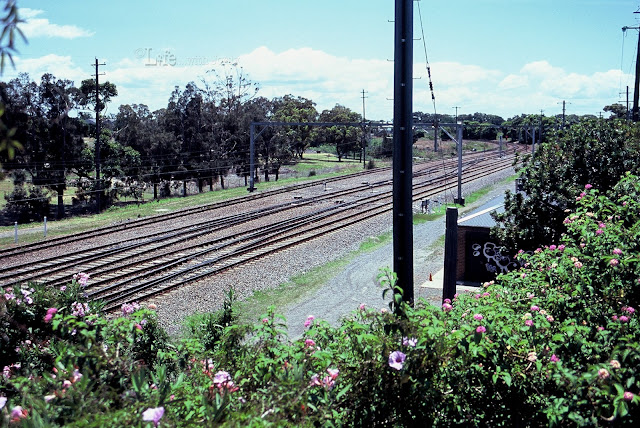My first Slide Film - Fuji Velvia 100
I have shot many different types of film.
I can't really say I have a favourite; each roll is its own little bundle of enjoyment (with a little disappointment thrown in rarely!)
All my films up until now have been negative films. Negative films are those whereby the image is produced on plastic which has multiple layers and each layer has a different sensitivity to a wavelength of light. After development in special chemicals, the colours on a negative film are inverted to their complimentary colours (each colour has an opposite). When looking at the film negative, that is why the colour looks so different. For black and white film that has no colour, those areas that are usually the lightest were the darkest point and vice versa. In the process of making a print, the colours and light are restored through the enlarging process onto print paper.
Colour negatives are pretty much 'what you see if what you get'; accurate colour and contrast (which is why it is preferred by portrait and wedding photographers). In previous subjects on my blog, you would have read that negative film also has a wide latitude for exposure. In other words, it is very forgiving for those mistakes made when calculating exposure. In fact, some photographers like to shoot their negative film underexposed or overexposed to get a certain look to the photo.
Slide film is known by a few names - Reversal film, Positive film; that is because the image on the film itself is exactly what you have shot on the camera; it's not all inverted colours like the negative film is. It produces a positive image on a transparent base. This is why this type of film is usually mounted inside a cardboard square and can be viewed using a projector.
There are a few drawbacks for using slide film. It is developed using E-6, a different chemical to that of negative film. Not all labs have this chemical and so I had to send the film away to be developed and scanned. That virtually doubled the price of having negatives developed and scanned! Slide film does not have the latitude of negative film to exposure. If shooting slide film, the exposure latitude is narrow so you have to be pretty well on target with your camera settings. You also need to shoot in areas with lots of light
One thing you will notice about slide film is the crisp, bright colours and contrast. They really make a photo POP! Slide film also has a finer grain, a higher resolution and greater sharpness than negative film.
Anyway, taking all of this in mind, I loaded the Velvia 100 into my Canon EOS 300V. I shot using my 50mm and 85mm primes.
Photos Copyright ©Life with Jordy Photography
All Rights Reserved


















Comments
Post a Comment